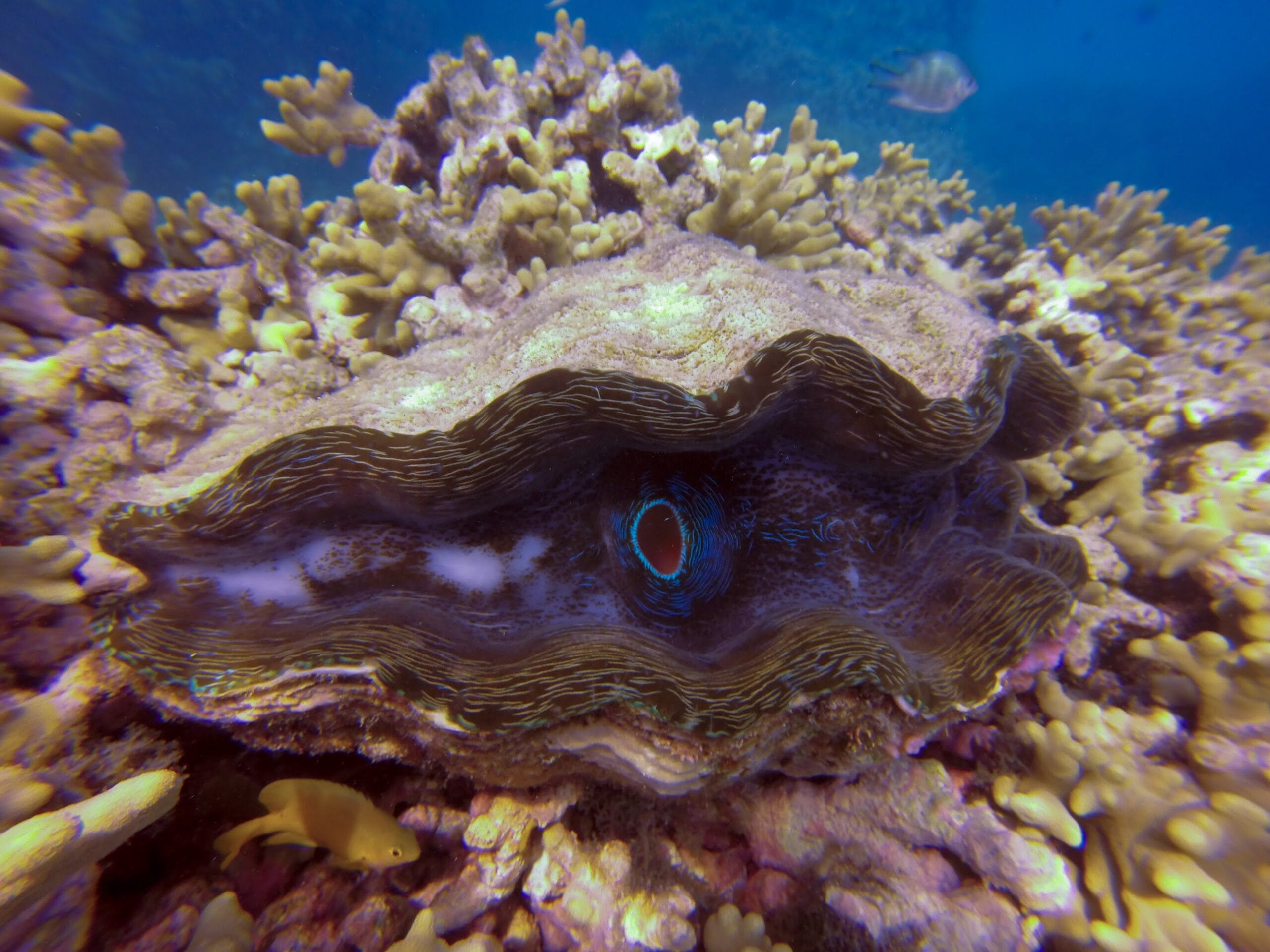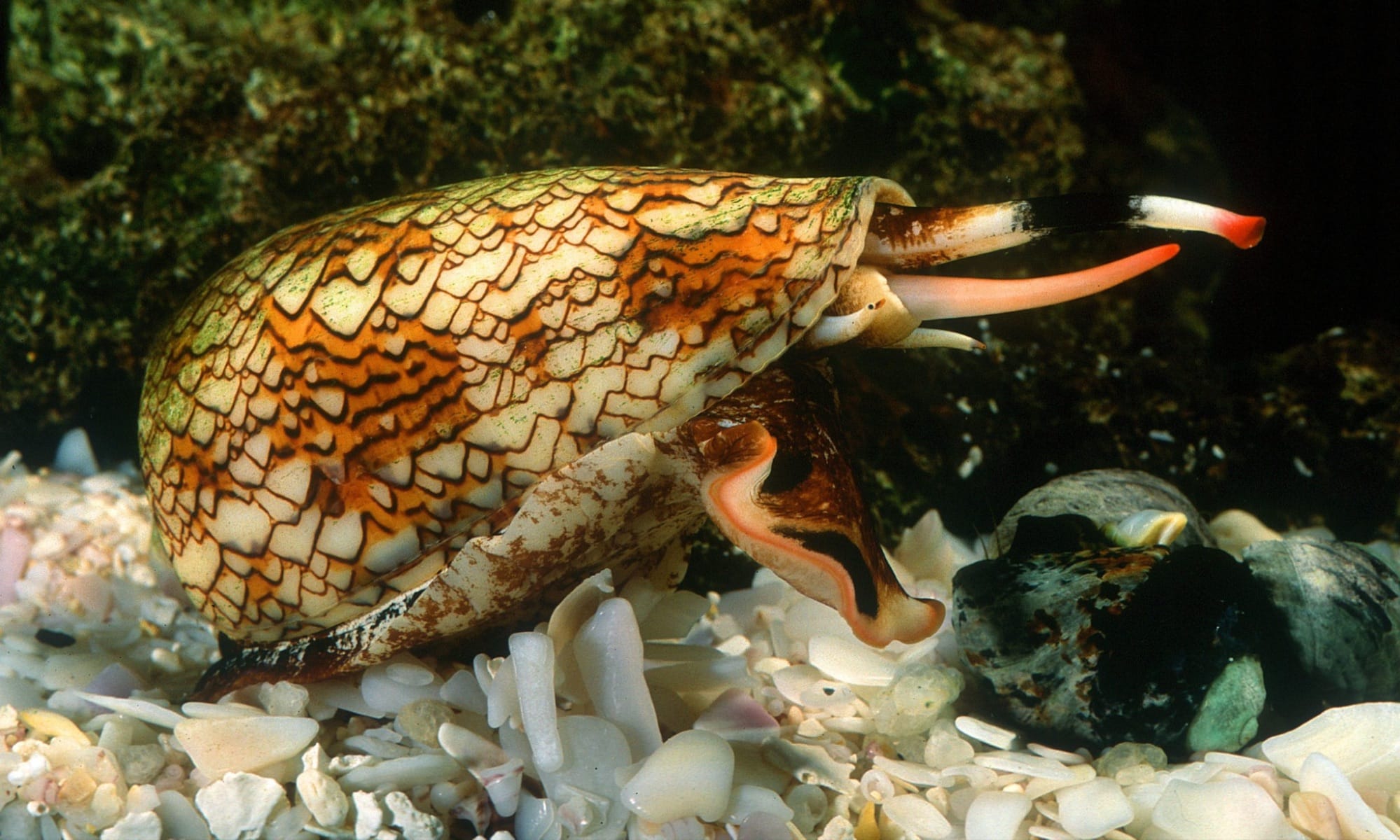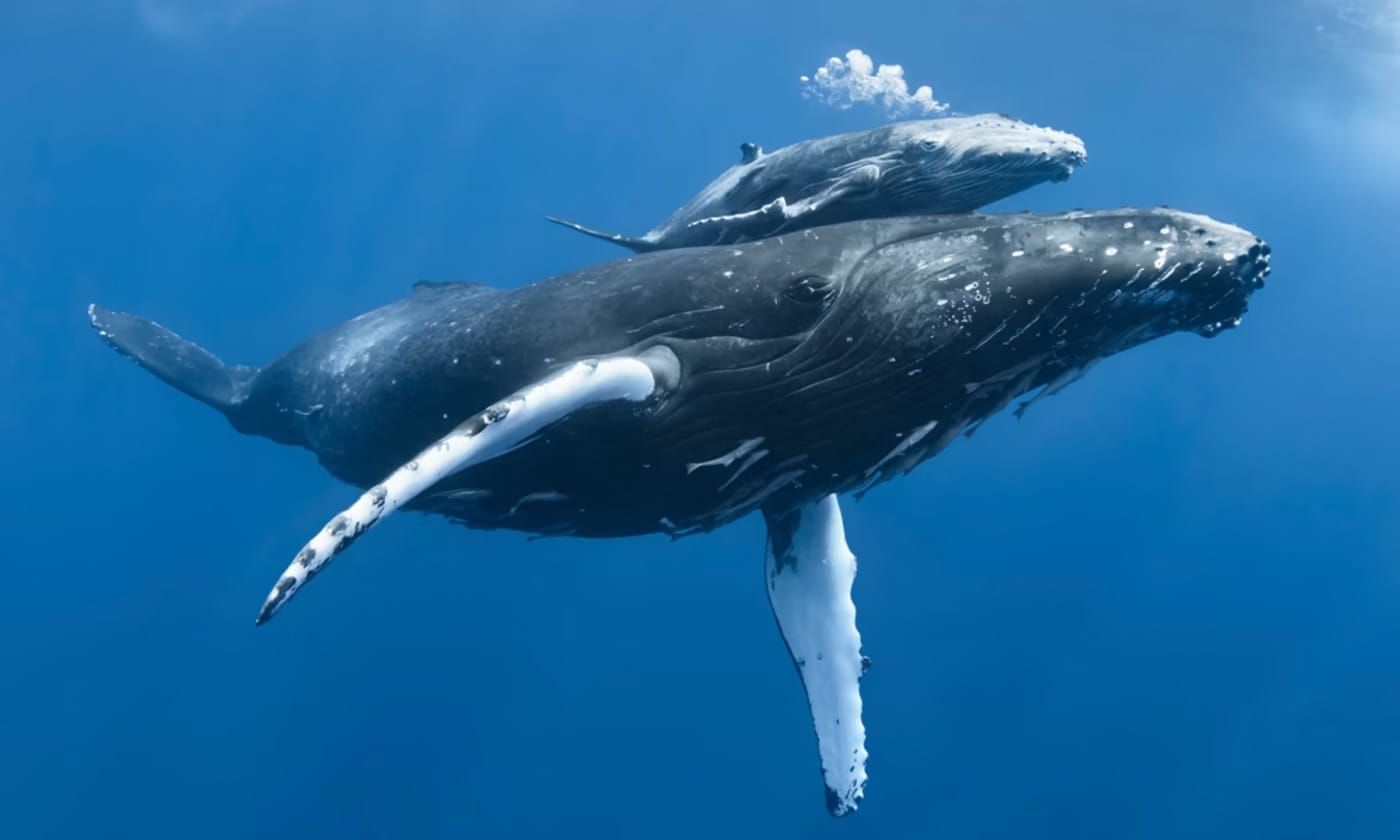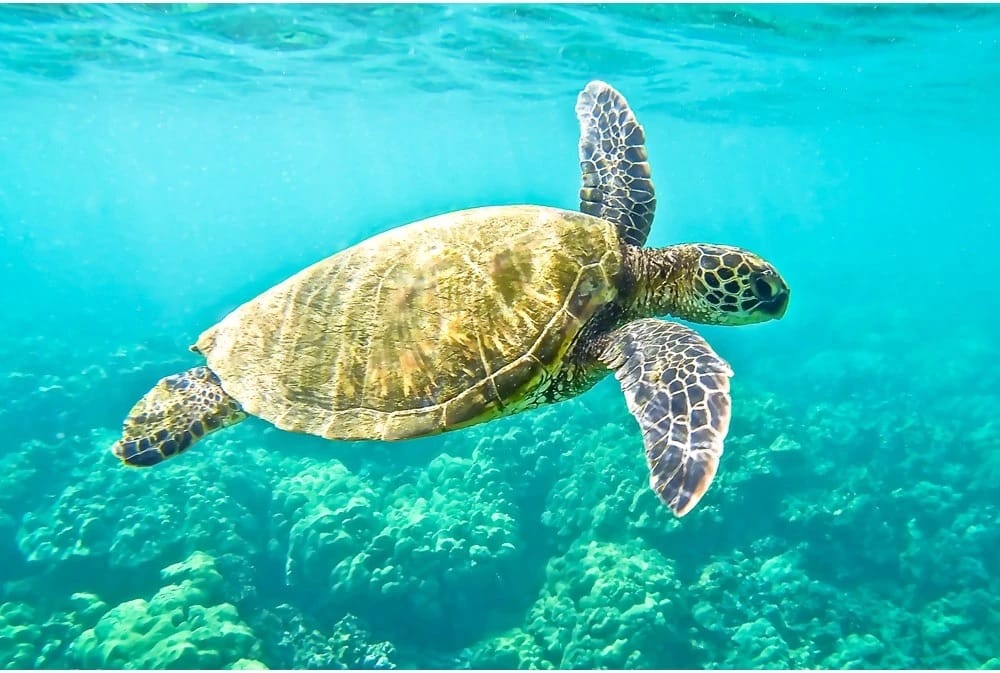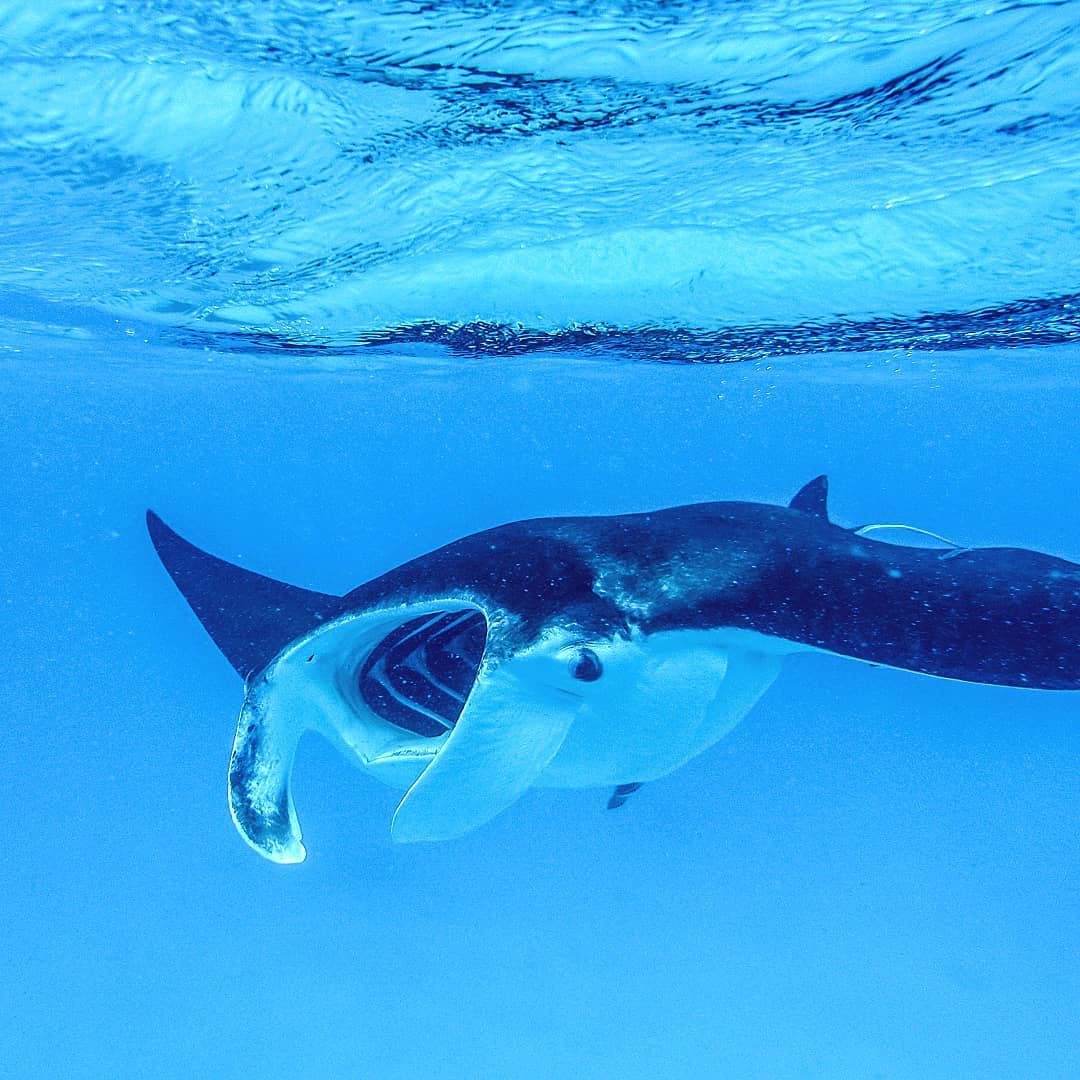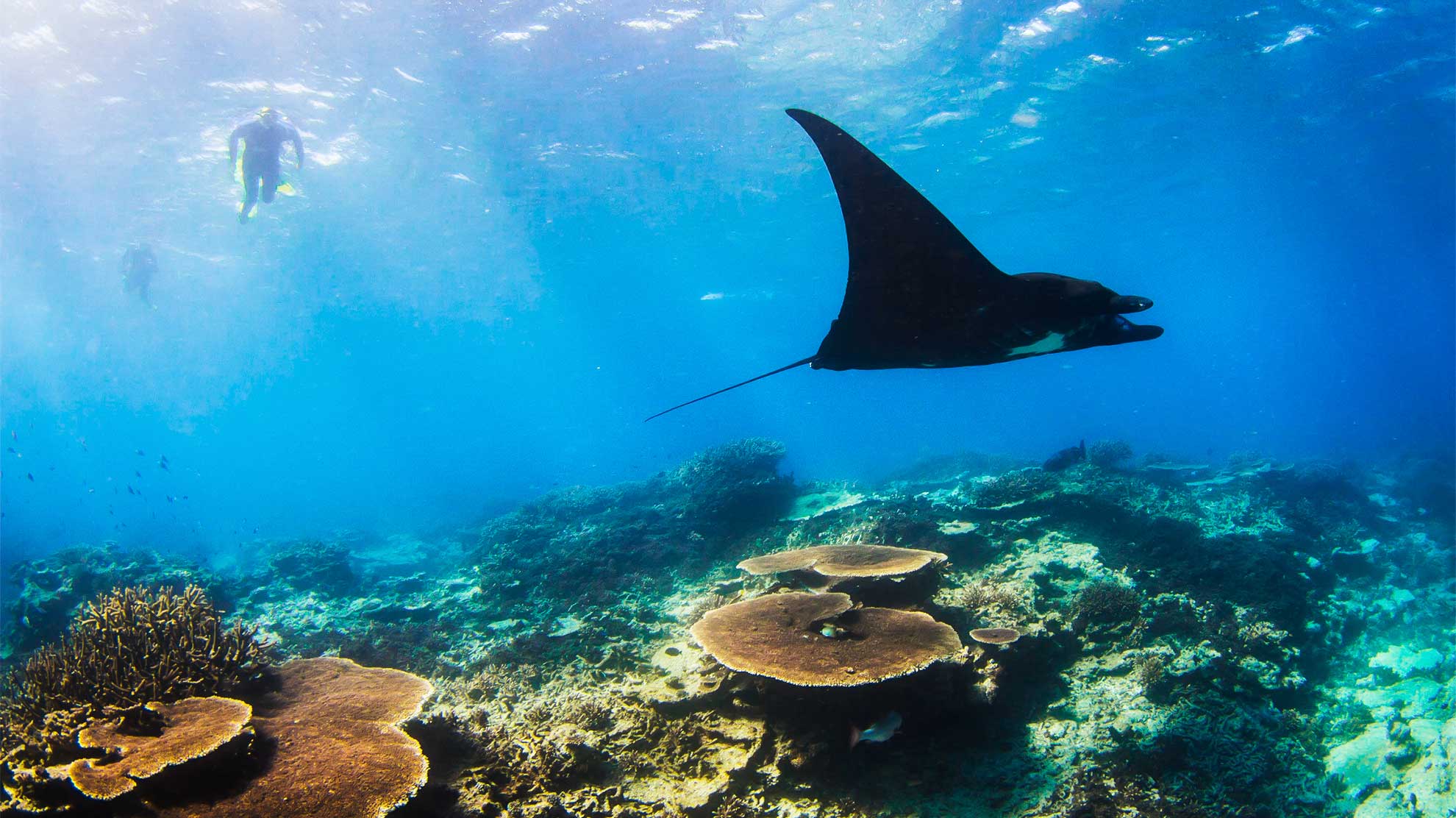A beautiful sight to behold, the giant clam, which enjoys the warm waters surrounding the Great Barrier Reef, is the largest living bivalve mollusc. At times weighing more than 200kg, these bottom feeding behemoths have an average lifespan of around 100 years in the wild.
Unlike many of the well-travelled Reef creatures, the Giant Clam remains on the reef for its entire life. It lays on the ocean floor, living at depth in broken coral or coral sand. Giant Clams are also found near China, Malaysia, and the Philippines. Giant clams are filter feeders, taking in plankton through a large, central opening. The clam’s algae also produces metabolic waste products, which serve as a second nutritional source. This allows the clams to grow large even in nutrient-lacking water.
Legends from the South Pacific tell of giant clams able to trap—and even devour—passing divers. Reputable marine manuals from centuries before warned against giant claims, detailing how a trapped diver could sever the clam and escape without drowning. In truth, giant clams are harmless to people. Their shells move far too slowly to trap any unsuspecting diver. Furthermore, there’s never been a recorded incidence of human death by clam!
The largest giant clam ever discovered measured 137 centimetres and weighed around 250kg!
By day, giant clams open their shells so that the algae inside them get a chance to photosynthesise.
Giant clam spawning sessions are suggested to coordinate with the phases of the moon.
The relationship between the giant clam and algae is considered a symbiotic, mutualistic relationship.
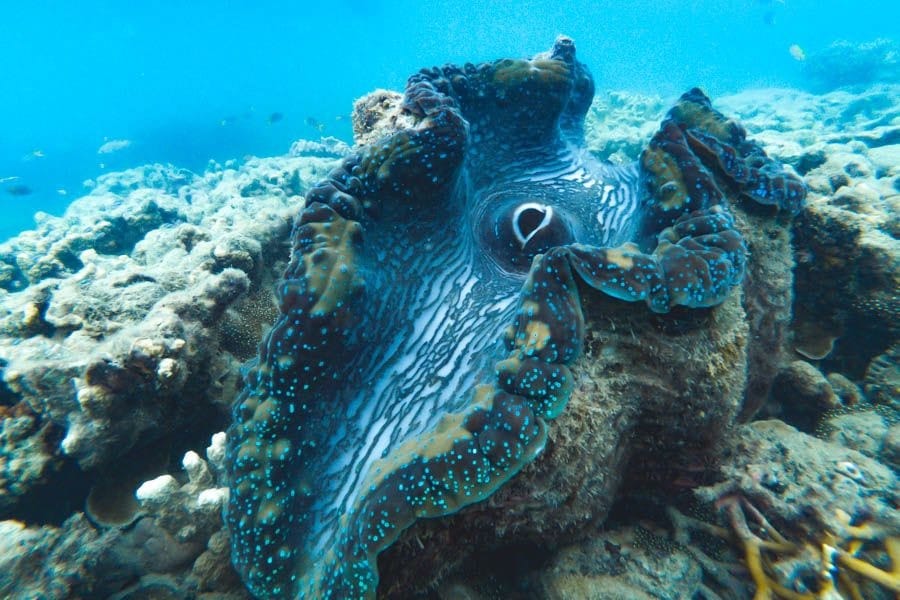
Giant clams are hermaphroditic, producing both eggs and sperm. A fully-grown giant clam can release over 500 million eggs in one go. As they cannot fertilise themselves, they reproduce through broadcast spawning. When an egg is released, this triggers nearby giant clams to swell their mantles and contract their adductor muscles. This causes the clams to fill with water containing broadcasted sperm and eggs.
Though giant clams are sedentary, they can open and close their shells. Some clams are unable to close their shells completely, meaning there is always a gap left open.
Due to the aquarium trade and the fact that the giant clam’s abductor muscle is considered a delicacy, the giant clam population has decreased substantially. This lands it a place on the increasingly diverse list of vulnerable species.
Giant Clams at Lady Musgrave Island Lagoon
It’s The Great 8!
The Giant Clam is found at our very own Lady Musgrave Island Lagoon part of the Southern Great Barrier Reef, with the Giant Clam earing its spot at number 5, alongside the likes of Whales, Manta Rays, Clown Fish, Sharks, Potato Cod, Maori Wrasse and Turtles.
Lady Musgrave Island is one of the only locations along the Great Barrier Reef where all 8 can be found, including of course the amazing Giant Clam.
Did you know?
It’s said that, like a human fingerprint, no two Giant Clams have the same colouration or mantle pattern. These wild technicolour effects actually come from algae living within the clam’s tissue.
These extraordinary mollusks, which can grow to 1.5 meters in length and weigh up to 200 kilograms, feature a pretty ordinary exterior but a stunning mantle – the fleshy part protruding from the shell.
One of these Clams is not like the other….
Adult giant clams cannot close their shells completely. This makes them the only species of clams unable to do so.
Male or Female?
By nature, Giant Clams are hermaphrodites. They possess the reproductive organs of both the sexes.
Despite this, they cannot reproduce on their own. On the contrary, they release sperms and eggs into the water.
A single giant clam can release over 500 million eggs at one time.
What’s for dinner?
The algae that grow within the Giant Clam’s mantle tissue are their main source of food. The giant clams absorb sugars and proteins, which these algae produce as they photosynthesize. The nutrition that they get from these algae enables them to acquire such enormous sizes.
Owing to their immense size and their sessility, giant clams are also preyed upon by a number of predators which are, more often than not, much smaller than them.

